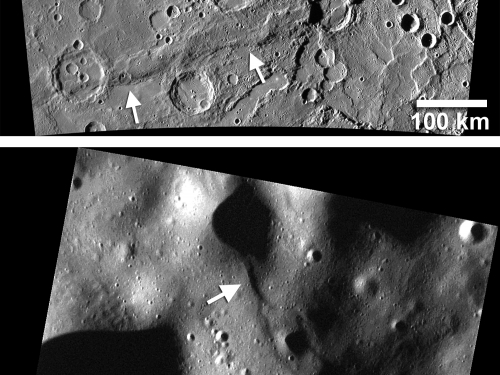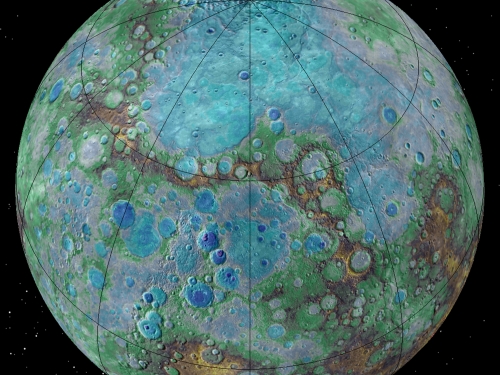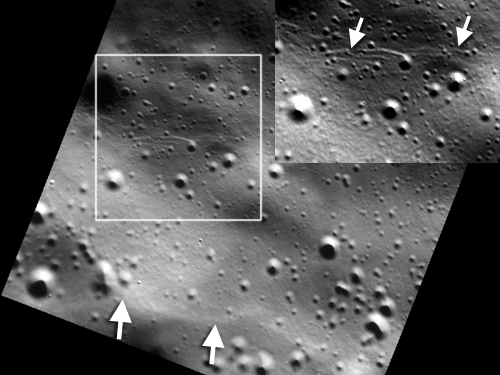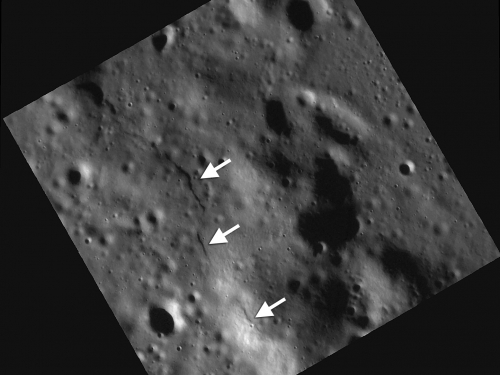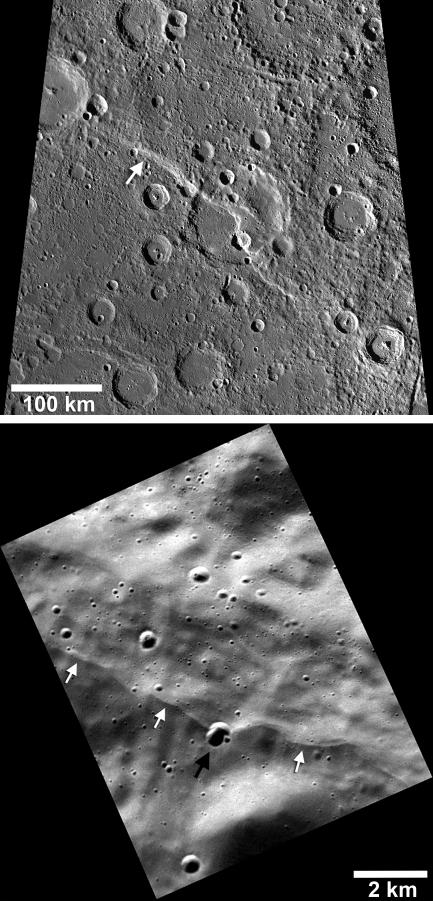
NASA/Johns Hopkins University Applied Physics Laboratory/Carnegie Institution of Washington/Smithsonian Institution
The very high resolution, low-altitude images of Mercury also reveal that the older, large fault scarps on Mercury are still active. Carnegie Rupes (top) is one of the largest lobate scarps in the northern hemisphere of Mercury. A segment of Carnegie Rupes imaged with a pixel scale of about 8 m shows evidence that the underlying thrust fault has been recently active. This means that in addition to forming new small faults, ongoing shrinking of Mercury is being accommodated by the older, larger fault scarps like Carnegie Rupes.
Credit: NASA/Johns Hopkins University Applied Physics Laboratory/Carnegie Institution of Washington/Smithsonian Institution

